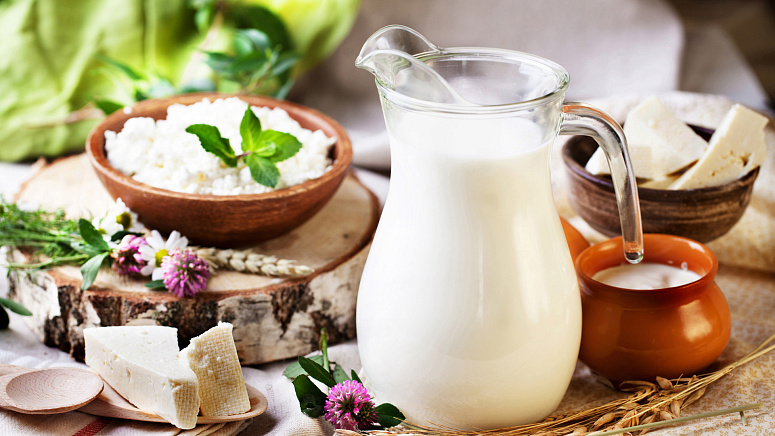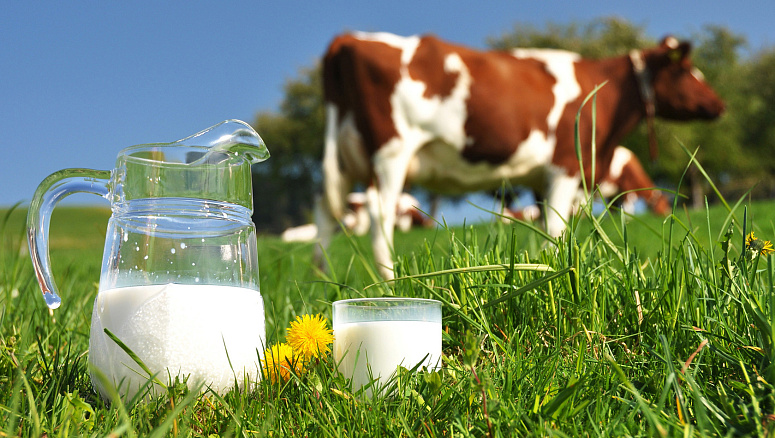In today’s world, a heated debate has arisen over products that were once universally celebrated as undeniably wholesome. A prominent case in point is milk and dairy products, which have now come under intense scrutiny, with claims linking them to the onset of cancer and cardiovascular conditions. Yet, does the evidence truly support these accusations, or are there finer details and complexities that must be thoughtfully examined when including dairy in one’s dietary regimen?
In Ayurveda, the qualities and benefits of milk for humans are described as follows:
- milk deeply enriches and sustains the body's tissues;
- at the mental level, it calms the mind, aids in balancing emotions, and dispels feelings of restlessness or heightened excitement;
- it harmonizes and stabilizes all three doshas.
To fully reap the benefits of milk, certain principles of consumption must be observed. Milk is inherently a dense and heavy substance, demanding robust agni, or digestive fire, for effective processing. To enhance its digestibility, Ayurveda suggests the following practices:
- Bring it to a boil, harnessing the transformative power of fire to mitigate its heaviness and enhance its digestibility. That said, boiling milk more than once is discouraged.
- Milk is best consumed warm, with the only exception being those with a pitta-dominant constitution, who may enjoy it at room temperature on particularly hot and sultry days. Furthermore, the addition of a small amount of white sugar to milk is advised only when there is an imbalance or excess of pitta.
- Add spices such as cardamom, cinnamon, black pepper, ginger, and turmeric.
- Drink it independently of other foods.
- Take it during the peak of digestive strength, referred to as the pitta period, which spans from 10:00 AM to 2:00 PM.
After drinking milk, one should avoid sleeping right away: doing so can result in undesirable outcomes like fluid retention, increased mucus production, and weight gain. The same effects can occur when milk is consumed excessively. To avoid this, milk should be consumed at least an hour and a half before going to sleep.
According to ancient texts, sleeping right after drinking milk can reduce longevity.
For people with a Pitta-dominant constitution, milk is especially beneficial: it has a calming effect, eases mental strain, and counters weariness, as their naturally vigorous and demanding lifestyles can often lead to overstimulation.
People of Vata type—characterized by a windy, dry dosha—can also benefit from milk. It supports their nourishment and recovery. Since Vata is inherently erratic, the grounding and heavy nature of milk works to counterbalance this airy dosha, imparting a sense of steadiness.
The Kapha dosha shares numerous characteristics with milk. According to Ayurvedic principles, "like attracts like", so people of this type should be mindful when incorporating milk into their diet.
If an individual’s digestive system fails to tolerate milk, the issue is not the milk itself, and simply avoiding it is not the remedy. Ayurveda identifies the cause as a weakened digestive fire, or jatharagni. To enhence this fire, one should start by adding spices to their meals, consuming food only when hunger is present, and opting for a cool shower before eating.
Raw, warm milk is revered as a nectar, brimming with wholesome qualities. When milk cools, it can be revitalized to mimic its fresh state by heating it to the brink of boiling three times—avoiding a full boil—and then pouring it back and forth between vessels seven times. This method enriches the milk with air, imparting a lighter quality and making it easier to digest.
Hot milk pacifies Vata and Kapha, as these doshas are cold by nature. However, when milk is improperly prepared or not well-digested, it can cause an excess of mucus and clog the body’s channels. Those with a Vata imbalance, particularly if they notice dry stools, may benefit from adding ghee to their milk to lubricate the intestines. To assess whether your body is digesting milk effectively, examine your tongue upon waking. A visible coating suggests incomplete digestion of the milk.
The first dairy item to include in your diet is ghee, or clarified butter. Like milk, ghee has a sweet flavor and harmonizes all three doshas. It possesses dipan-pachan qualities, enhancing digestion without provoking pitta dosha. Additionally, ghee helps absorb toxins, which is why it is utilized in Panchakarma preparations and later removed from the body through therapies like virechana or basti.
Despite its many benefits, ghee is not suitable for everyone, as it may trigger individual sensitivities. This can be detected through your sensory reactions: if the smell or taste of ghee is unappealing to you, it is best to avoid it. Consuming it under such circumstances will impede proper digestion, resulting in the production of toxins and ama—harmful residues that form in the body due to digestive disturbances.
Ghee should only be consumed warm, alongside warm meals. This rule extends to any food prepared with ghee, including baked items like bread or cookies. Such dishes should be eaten with warm accompaniments, such as hot tea, soup, or steamed vegetables.
Uses of ghee:
- add just one teaspoon into your meal;
- enhance the spices upon it, transforming it into a vessel that carries the essence of these flavors;
- consider taking a teaspoon of ghee on an empty stomach, followed by a cup of warm water. This practice is particularly beneficial for those with dry skin, as it encourages the body to hydrate itself. Ensure the water you drink is warmer than your body temperature; a simple way to check is to dip your finger into the glass – it should feel distinctly warm.
A great accompaniment to rice, vegetables, and flatbread.
A delightful breakfast recipe: a blend of nuts and dried fruits, fennel, cardamom, cinnamon, saffron, and warm ghee. While this combination may not appeal to everyone, consider individual dietary preferences. For an added touch, you can mix in some yogurt.
Preparing ghee at home is surprisingly straightforward: start by heating unsalted butter until it reaches a rolling boil. Expect some vigorous bubbling and sputtering, which is completely normal. Allow it to simmer uncovered over low heat for a considerable amount of time, until the butter turns a clear, amber gold and fills your kitchen with a rich, inviting aroma. As it cooks, skim off any foam that rises to the top—this is just the milk solids (proteins) separating. The entire process usually takes about 90 minutes or longer, depending on the butter. To check for doneness, drop a bit of water onto the butter; a distinct crackling sound will let you know the ghee is ready.
As highlighted, Ayurveda emphasizes the correct use of milk and ghee as means to support overall well-being.

